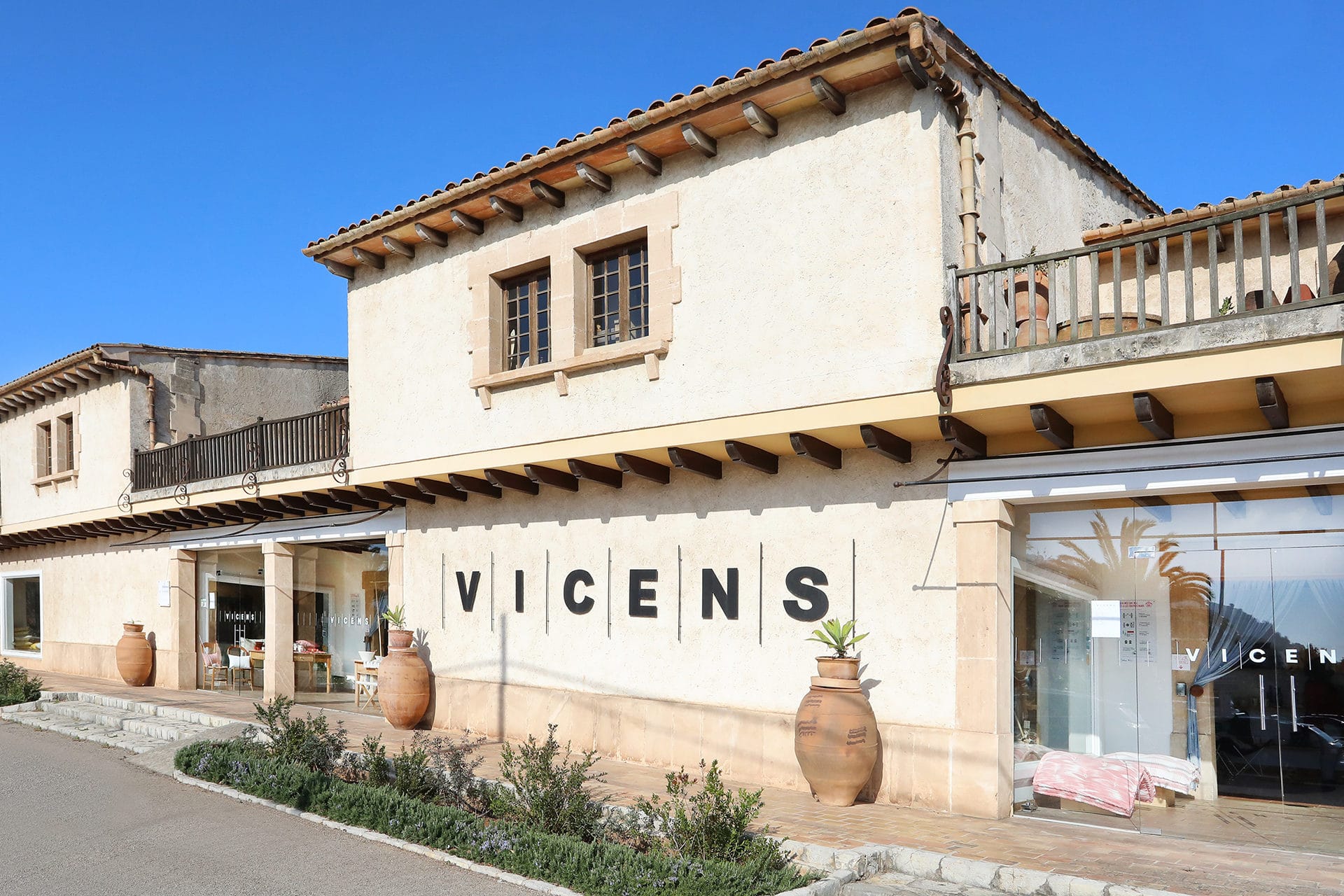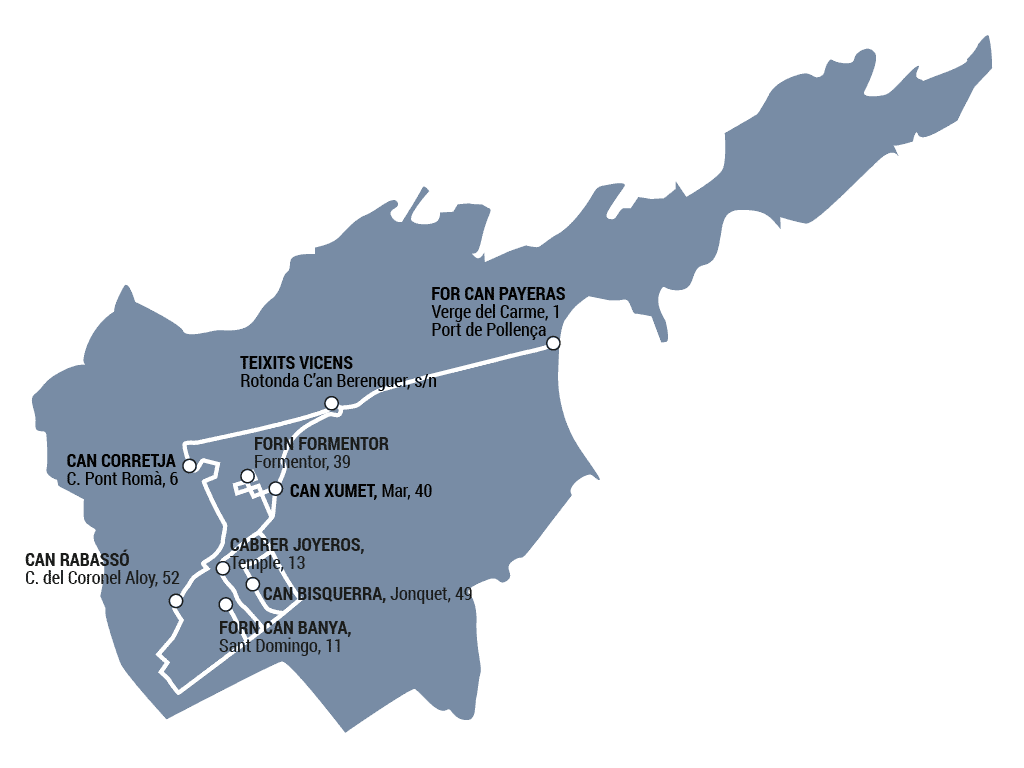



Teixits Vicens
The grandparents of Martí Vicenç Alemany, Bonjesús, a multifaceted artisan and artist, had a small woollen, floral and brin weaving workshop in Pollença. Later, his father, Martí Vicenç i Vilanova, introduced the weaving of llengües and a freer style into the fabrics of Pollença. The trade of weaving fabrics using the ikat technique dates back to the 16th century and came to Mallorca via the silk route.
Martí and his brother Rafel, from a very young age, used to go to the looms to weave cànyems, a type of apron made of wool and linen. The death of Martí’s father in the Civil War meant that he was unable to teach the craft to his sons, but with the help of notes and with the little experience he had, Martí “reinvented” the llengües clothing, with a personal touch in its colours and forms.
Later, he married Antònia Capllonch, in whom he found the ideal partner to be able to express his creative desires, which were reflected in upholstery, table linen, bedroom linen and much more, all without losing the artisan spirit of Mallorcan clothing.
With a lot of effort the couple bought the house of Can Sionet, in Calvari Pollensín, the current home of the Martí Vicenç Museum, and later they moved to Can Berenguer, the current workshop-shop that they opened in the seventies. Since then, this is a well-known place in the village and also in Mallorca because many customers come, if not to buy, to see the shop and to visit the workshop.
One of the key events in Martí Vicenç’s life was his profession as a craftsman. The textile world was part of his life, from his birth until his death. He knew how to adapt his creations to the needs of each moment in constant evolution, until he was able to create avant-garde craftsmanship that never lost his personal mark. In 1980, they were awarded the FAD prize for the design of the 124 black fabric model.
All this amalgam of fabrics, plus the creations and designs of Antònia Capllonch, are still manufactured today and have not lost any of their initial freshness, combining perfectly in all environments and styles. The current owners, the fifth generation of the family, continue to innovate in new products and colours without losing the philosophy of their parents and grandparents.

Rotonda Can Berenguer, s/n · Pollença · Mallorca
+34 971 530 450

 @Teixits Vicens
@Teixits Vicens @Teixits Vicens
@Teixits Vicens @Teixits Vicens
@Teixits Vicens